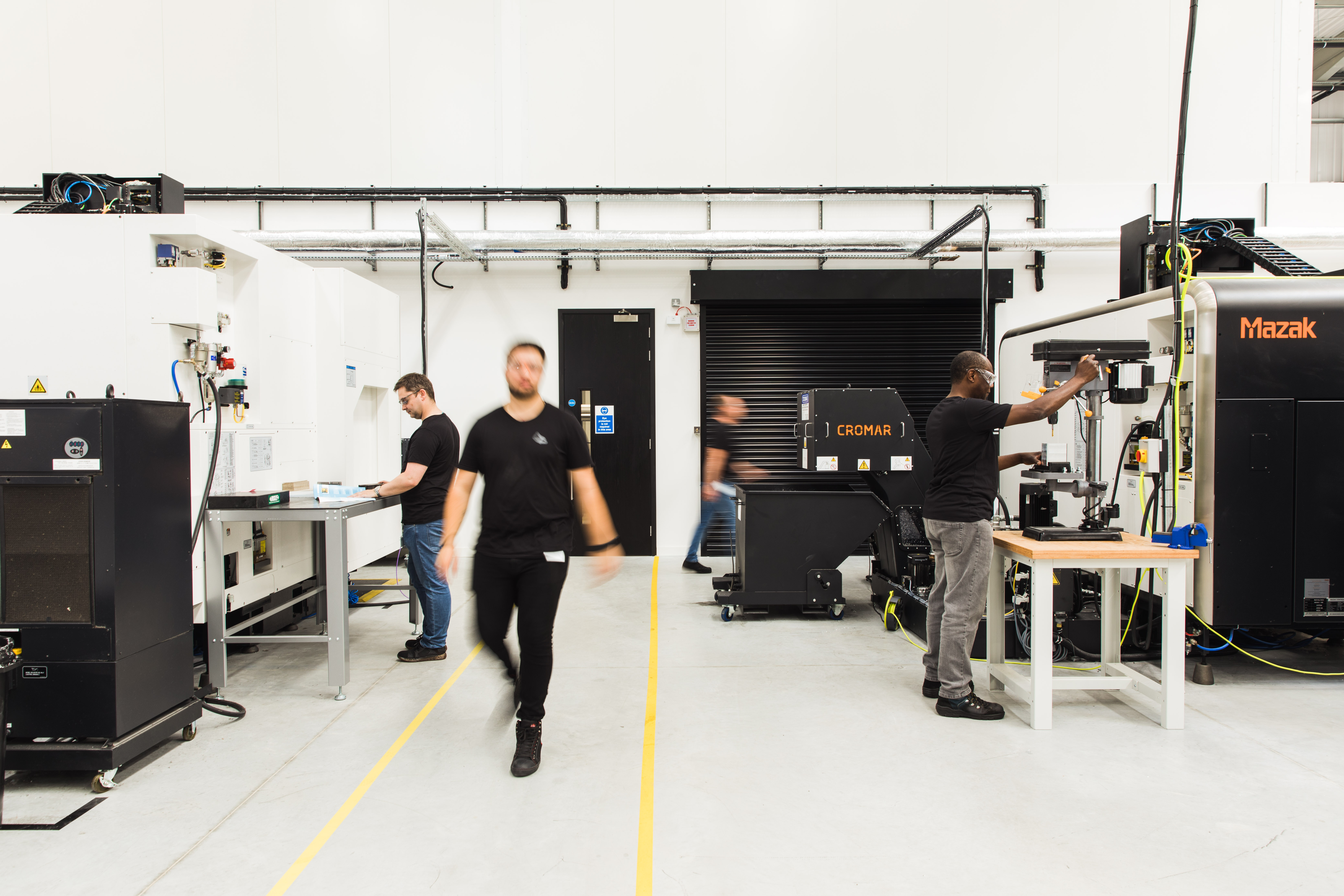
Hiring skilled machinists is one of the most pressing challenges facing modern machine shops. In this guide, we explore practical strategies to attract and retain top talent - whether you run a small job shop, or a larger precision manufacturing operation.
At CloudNC, we not only work with machine shops around the world to make them more productive with technology - we also run our own high-spec factory in the UK, where we employ brilliant machinists, who not only make components for the world’s leading companies, but also refine and develop our software - so we have insight to add from both sides of the coin!
Why hiring machinists is so difficult today
The machinist workforce is aging and fewer young professionals are entering the field. Retirements are accelerating, and overall interest in manufacturing careers remains low compared with other industries. At the same time, many skilled machinists feel overwhelmed by outdated work cultures or slow career progression.
How machinists decide where to work
According to recent insights, today’s tradespeople value:
- Fair, transparent pay
- Access to quality tools and technology
- Scheduled, predictable shift patterns
- Opportunities for learning and advancement
- Respect and recognition from leadership
- Word of mouth reputation of the employer (company)
Use job ads to attract the right candidates
To stand out in the job market:
- Lead with a clear, compelling headline, e.g. “CNC machinist – four‑day week, modern workshop, paid training.”
- List the machines, controls, CAM packages, and materials they’ll work with - letting candidates quickly self‑assess fit. (If they’ll have access to our CAM Assist AI solution, that’s also a bonus!)
- Promise a structured development path, such as performance and pay reviews after six months.
Where to promote your machinist roles
Post listings on specialist CNC and manufacturing forums and job boards, such as Practical Machinist and mainstream engineering recruitment agencies. Promote roles at trade shows such as Farnborough Air Show or MACH. Also, tap into regional Facebook and LinkedIn groups where machinists share job leads and technical advice.
Build relationships with education partners
Partnering with local vocational schools, technical colleges, or apprenticeships can help you develop a pipeline of entry‑level machinists eager to grow. These partnerships work especially well when a shop offers clear training paths - something that job seekers increasingly expect.
Craft a careers page that converts
Your careers page should feel like more than a job listing - it’s the first impression for would‑be applicants. According to best practices:
- Ensure fast page load and mobile‑friendly design to keep candidates engaged.
- Share stories about your shop’s culture, growth opportunities, and testimonials from existing machinists to build trust.
- Use relevant keywords (“hire machinist,” “CNC machinist job”) naturally in job descriptions and meta tags to boost search visibility.
Summary checklist: how to hire good machinists
1. Write clear, targeted job ads
Make sure your listings clearly describe the role, including specific machines, software, and materials. This helps the right candidates assess whether they’re a good fit - saving time for both parties.
2. Use specialist forums and social groups
Go beyond traditional job boards. CNC forums, Facebook groups, and LinkedIn communities focused on manufacturing are where many machinists actively network and search for work.
3. Create a compelling careers page
Your website’s careers section should do more than list openings. Share insights into your culture, showcase real employee stories, and ensure the page loads quickly and works well on mobile devices.
4. Promote what machinists care about
Focus your messaging on what really matters: fair pay, good tooling, a respectful environment, and clear advancement opportunities. This helps retain your best machinists and attract new ones.
5. Highlight modern support tools
Mention tools like CAM Assist that help experienced team members be more productive and support junior machinists. This demonstrates your investment in technology and your people - without overpromising.
6. Assess technical ability thoroughly
Include a short skills test and review how candidates approach a part drawing – from planning setups and tool selection to achieving tolerances. Back this up with questions about their past experience to confirm they can translate drawings into quality parts on the shop floor.




